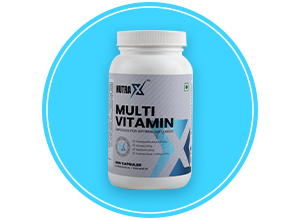
How Much Fat You Should Eat Per Day? | Daily Fat Intake Calculator
Share
Wondering how much fat you should eat per day to support your weight loss, fitness, or health goals? Daily Fat Intake Calculator makes it easy to find your personalized fat intake in seconds. Enter your age, gender, weight, height, activity level, and weight goal to get a tailored recommendation based on Dietary Guidelines (20–35% of daily calories from fats).If you are following a well-rounded diet or taking the "Best Health Supplement" as part of a fitness regimen, this calculator is your companion.
Prefer to calculate manually? Use the Fat Intake Formula below to determine your needs. Whether you’re aiming to shed pounds, kg, build muscle, or maintain a balanced diet, this tool and guide help you plan with confidence. Calculate with Fat Intake Calculator for Weight Loss or general health now and discover the recommended fat intake per day for you!
Fat per day (grams) = (Total Daily Calories × Fat Percentage) ÷ 9
Want to calculate Daily calories read our guide: How Many Calories Should You Eat to Lose Weight?
Why Use a Daily Fat Intake Calculator?
Fats are an essential macronutrient, giving us energy, assisting in hormone regulation, and facilitating nutrient uptake. But the correct amount is essential to make your goals happen. Too little fat can cause nutrient malnutrition, and too much can interfere with weight loss or heart health. The Daily Fat Intake Calculator simplifies nutrition planning by:
- Personalizing Your Needs: Accounts for your activity level, weight goals, and body metrics.
- Simplifying Diet Planning: Converts complex calorie percentages into grams of fat per day.
- Supporting Health Goals: Aligns with guidelines from the USDA and WHO for balanced nutrition
For example, a 2,000-calorie diet typically requires 44–78 grams of fat daily (20–35% of calories). But your needs vary based on whether you’re sedentary, active, or following a specific diet like keto. Use our calculator to find how many grams of fat per day is right for you, or read the formula under for calculations manually!
Fat Intake Formula: Calculate Manually
Calculate your fat intake without a tool? Use this simple Fat Intake Formula:
Fat per day (grams) = (Total Daily Calories × Fat Percentage) ÷ 9
Steps to Calculate:
-
Know Your Total Daily Calorie Needs
I. Example: 2,000 kcal per day (use our Calorie Calculator to estimate). -
Choose Your Fat Intake Range
I. Recommended: 20% to 35% of total calories from fat.
II. Example: 30% of 2,000 kcal = 600 kcal from fat. -
Divide Fat Calories by 9
I. Each gram of fat = 9 kcal.
II. Example: 600 ÷ 9 = ~67 grams of fat per day.
Example:
Let’s say you eat 2,000 calories/day and want 30% of your diet from fat:
Fat per day = (2,000 × 0.30) ÷ 9 = 600 ÷ 9 = ~67 grams
Fat Intake Based on Calories:
|
Daily Calories |
25% Fat |
30% Fat |
35% Fat |
|
1,600 kcal |
44g |
53g |
62g |
|
1,800 kcal |
50g |
60g |
70g |
|
2,000 kcal |
56g |
67g |
78g |
|
2,200 kcal |
61g |
73g |
86g |
|
2,500 kcal |
69g |
83g |
97g |
Why Fat Intake Matters for Weight Loss and Health
It's essential to understand how many grams of fat per day you should have for attaining your health objectives. Here's why.
- Weight Loss: Moderate fat consumption (20–25% of calories) helps to satiate and prevents overeating. For a 1,800 calorie weight loss regimen, this translates to ~40–50g of fat per day.
- Heart Health: Unsaturated fats (fatty fish, olive oil) reduce bad cholesterol, and increase the risk for heart disease, according to the American Heart Association.
- Energy and Performance: Active people, such as sport participants, can consume as much as 35% fat (e.g., 97g for a 2,500-Cal diet).
- Fat Absorption: Fats aid the absorption of vitamins A, D, E, and K, which are immune functions and bone health.
Types of Dietary Fats Explained
Not all fats are equal. Here’s a breakdown to guide your choices:
- Unsaturated Fats (Healthy):
- Found in avocados, nuts, seeds, olive oil, and fatty fish (e.g., salmon).
- Benefits: Improve cholesterol levels, reduce inflammation.
- Example: 1 tbsp olive oil = ~14g fat.
- Saturated Fats (Limit):
- Found in butter, red meat, and full-fat dairy.
- Recommendation: <10% of daily calories (e.g., 20g for 2,000 calories).
- Example: 1 oz cheese = ~6g saturated fat.
- Trans Fats (Avoid):
- Found in processed foods (e.g., margarine, packaged snacks).
- Risks: Increase bad cholesterol, linked to heart disease.
- Example: Avoid foods with “partially hydrogenated oils.
- What to Do With Your Fat Intake Results
Once you know your recommended fat intake per day (e.g., 67g for a 2,000-calorie diet at 30% fat), apply it to your diet with these tips:
Choose Healthy Fats: Prioritize unsaturated fats. Example: Add sliced avocado (10g fat) to salads or almonds (7g fat per 1 oz) as a snack.
Limit Harmful Fats: Check labels for trans fats and reduce saturated fat sources like fried foods.
Plan Balanced Meals:
- Breakfast: Greek yogurt with chia seeds (10g fat) and berries.
- Lunch: Grilled chicken salad with olive oil dressing (15g fat).
- Dinner: Baked salmon (12g fat) with quinoa and steamed broccoli.
Sample Meal Plan (67g Fat/Day):
- Breakfast: Oatmeal with 1 tbsp peanut butter (8g fat).
- Snack: 1 oz almonds (14g fat).
- Lunch: Tuna salad with 1 tbsp mayo (10g fat).
- Dinner: Grilled chicken with 1/2 avocado (15g fat).
- Dessert: Dark chocolate (3g fat).
- Evening Snack: Handful of walnuts (17g fat).
How NutraX Health Supplements Help You Achieve Your Goal
We believe that a well-balanced diet and the appropriate supplementation complement each other. Whether your goal is weight loss, muscle gain, or improved daily performance, NutraX health supplements are designed to support every step of your journey.
Here’s how NutraX helps:
-
Buy Isolate Whey Protein – Supports muscle recovery and lean muscle growth.
-
Buy BCAA – Reduces muscle soreness, boosts endurance, and prevents fatigue during workouts.
-
Buy Pre Workout Supplements – Provides energy and focus to maximize training sessions.
- Buy Multivitamins – Covers nutritional gaps and supports overall wellness
Frequently Asked Questions (FAQs)
How Many Grams of Fat Should I Eat Daily?
Most adults need 20–35% of calories from fat, or 44–78g for a 2,000-calorie diet, per USDA guidelines. Use our Daily Fat Intake Calculator or the formula: (Calories × Fat %) ÷ 9.
What’s the Recommended Fat Intake for Weight Loss?
For weight loss, aim for 20–25% of calories from fat (e.g., 40–50g for 1,800 calories). This balances satiety and calorie reduction. Try Fat Intake Calculator for Weight Loss!
How Does Activity Level Affect Fat Intake?
Active individuals need more calories, allowing higher fat intake (e.g., 97g for 2,500 calories at 35%).
Are All Fats Bad for You?
No! Unsaturated fats are heart-healthy, while saturated fats should be limited, and trans fats avoided. Focus on foods like olive oil and nuts for optimal health.
How to Calculate Fat Intake for a Keto Diet?
Keto diets require 60–75% of calories from fat (e.g., 120–150g for 2,000 calories). Use the formula: (Calories × 0.60–0.75) ÷ 9, or try our calculator.




